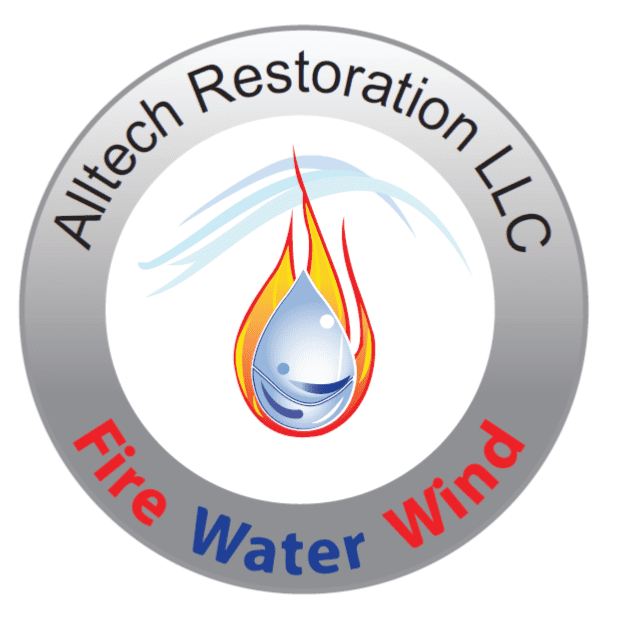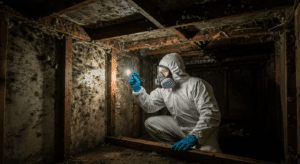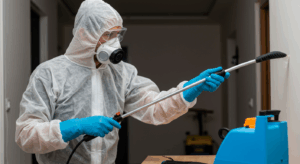Water damage can wreak havoc on your home, and one of its most concerning consequences is mold growth. Mold not only poses health risks but can also cause significant structural damage if left untreated. This guide will walk you through the importance of quick action, effective cleanup tips, and prevention strategies to tackle mold after water damage.
: Quick Action, Cleanup Tips, and Prevention Strategies
Importance of Quick Action
When water damage occurs, time is of the essence. Mold can start growing within 24 to 48 hours in damp conditions, making immediate action crucial. The longer water sits, the more it seeps into porous materials like drywall, carpets, and wood, creating the perfect environment for mold spores to thrive.
Quick action involves identifying the source of water damage and stopping it immediately. Whether it’s a burst pipe, flooding, or a leaking roof, addressing the root cause prevents further water intrusion. Once the water source is controlled, drying out the affected area becomes the next priority. Using dehumidifiers and fans can speed up the drying process and reduce the risk of mold growth.
Who Should Handle Cleanup?
Deciding whether to handle mold cleanup yourself or hire professionals depends on the severity of the situation. For small, localized mold patches (less than 10 square feet), a DIY approach can be effective. Equip yourself with protective gear like gloves, goggles, and a mask, and use cleaning agents such as bleach or vinegar to remove mold.
However, for extensive mold infestations or when mold is present in hard-to-reach areas like HVAC systems, professional intervention is necessary. Experts have the tools and expertise to safely remove mold and prevent it from spreading. Additionally, professionals can assess the extent of water damage and recommend repairs to prevent future issues.
For reliable mold removal services, check out Expert Mold Removal Specialist in New Braunfels, TX.
Key Tips for Effective Mold Cleanup
Cleaning up mold after water damage requires a systematic approach to ensure thorough removal and prevent recurrence. Here are some essential tips:
- Wear Protective Gear: Always use gloves, goggles, and a mask to protect yourself from mold spores.
- Isolate the Area: Seal off the affected area to prevent mold spores from spreading to other parts of your home.
- Remove Damaged Materials: Discard porous materials like carpets, drywall, and insulation that cannot be salvaged.
- Clean Surfaces Thoroughly: Use a mixture of water and detergent or specialized mold cleaners to scrub non-porous surfaces.
- Dry the Area Completely: Use fans and dehumidifiers to eliminate moisture, as damp conditions encourage mold growth.
By following these steps, you can effectively remove mold and reduce the risk of future infestations.

Risks Associated with Mold After Flooding
Mold poses significant risks to both your health and property. Prolonged exposure to mold can lead to respiratory issues, allergies, and skin irritation. Individuals with pre-existing conditions like asthma or weakened immune systems are particularly vulnerable.
From a structural perspective, mold can weaken building materials over time. It feeds on organic matter, causing wood to rot and drywall to crumble. If left unchecked, mold can compromise the integrity of your home, leading to costly repairs.
Understanding these risks underscores the importance of addressing mold promptly and thoroughly. For more insights on mold-related health risks, visit Understanding Water Damage and Black Mold: Health Risks, Prevention, and Remediation Strategies.
Prevention Strategies to Avoid Mold Growth
Preventing mold growth after water damage is more cost-effective and less stressful than dealing with an infestation. Here are some proactive measures to keep your home mold-free:
- Control Humidity Levels: Maintain indoor humidity levels below 60% using dehumidifiers and air conditioners.
- Fix Leaks Promptly: Address plumbing leaks, roof damage, and foundation cracks as soon as they are detected.
- Ensure Proper Ventilation: Use exhaust fans in bathrooms and kitchens to reduce moisture buildup.
- Inspect Your Home Regularly: Check for signs of water damage, such as discoloration or a musty odor, and address them immediately.
- Use Mold-Resistant Products: When renovating, opt for mold-resistant drywall, paint, and insulation to minimize the risk of mold growth.
Implementing these strategies can help you maintain a healthy and safe living environment. For expert advice on mold prevention, explore Effective Mold Removal Solutions for Clean Air in San Antonio, TX.
Conclusion
Mold removal after water damage requires swift action, proper cleanup techniques, and preventive measures to protect your home and health. Whether you choose to tackle the issue yourself or hire professionals, addressing mold promptly is key to minimizing its impact. By following the tips and strategies outlined in this guide, you can effectively manage mold and prevent it from becoming a recurring problem.
For comprehensive restoration services, visit Expert Restoration Services in New Braunfels, TX: Water, Fire, and Mold Damage Solutions.




